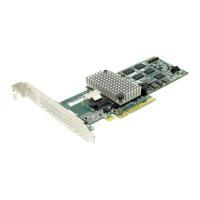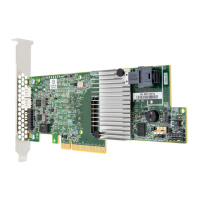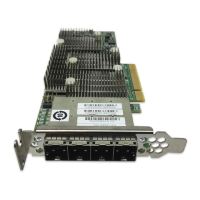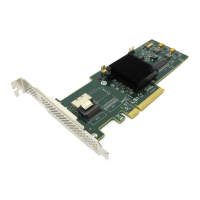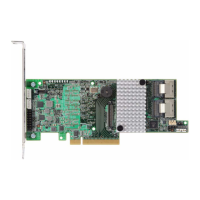Background Tasks
www.lsi.com/channel/products 155
A RAID 50 unit can sustain multiple drive failures, as long there is only one
failed drive in each RAID 5 set.
A RAID 6 unit can have two simultaneous drive failures, before becoming
inoperable.
When a redundant RAID unit is running in Degraded mode and you rebuild it,
the missing data is reconstructed from all functioning drives.
Rebuilding a Unit Through 3DM2
When a drive on a unit becomes defective, you replace it with an available
drive and then rebuild the unit. If Auto-Rebuild is enabled and a drive is
available, starting the rebuild is optional as it will start automatically.
To rebuild a unit through 3DM2
1 If necessary, add a new drive to replace the failed drive. (For details, see
“Adding a Drive” on page 129.)
2 In 3DM2, choose
Management >> Maintenance.
3In the
Unit Maintenance section of the Maintenance page, select the
degraded unit and click the
Rebuild Unit button.
4 When a dialog box displays available drives, select the drive you want to
replace the failed drive and click
OK.
Figure 74. Selecting a Drive when Rebuilding
Note: If a rebuild fails, check the Alarms page for the reason. If there was an ECC
error on the source disk, you can force the rebuild to continue by checking the
Overwrite ECC policy on the Controller Settings page in 3DM2 and then running
Rebuild again. This will cause uncorrectable blocks to be rewritten and the data
may be incorrect. It is recommended that you execute a file system check when the
rebuild completes.
• Under Windows, you can do this by right-clicking on the Drive and choosing
Properties; then on the Tools tab, click Check Now.
• Under Linux or FreeBSD use
fsck
• On Mac OS X, you can do this using the First Aid tab in the Disk Utility—select
the disk on the left and then click Verify Disk. If verification encounters
problems, you can then use the Repair Disk option on the same screen.
• For OpenSolaris and VMware you should follow your operating system’s guide
to perform a file system check.
